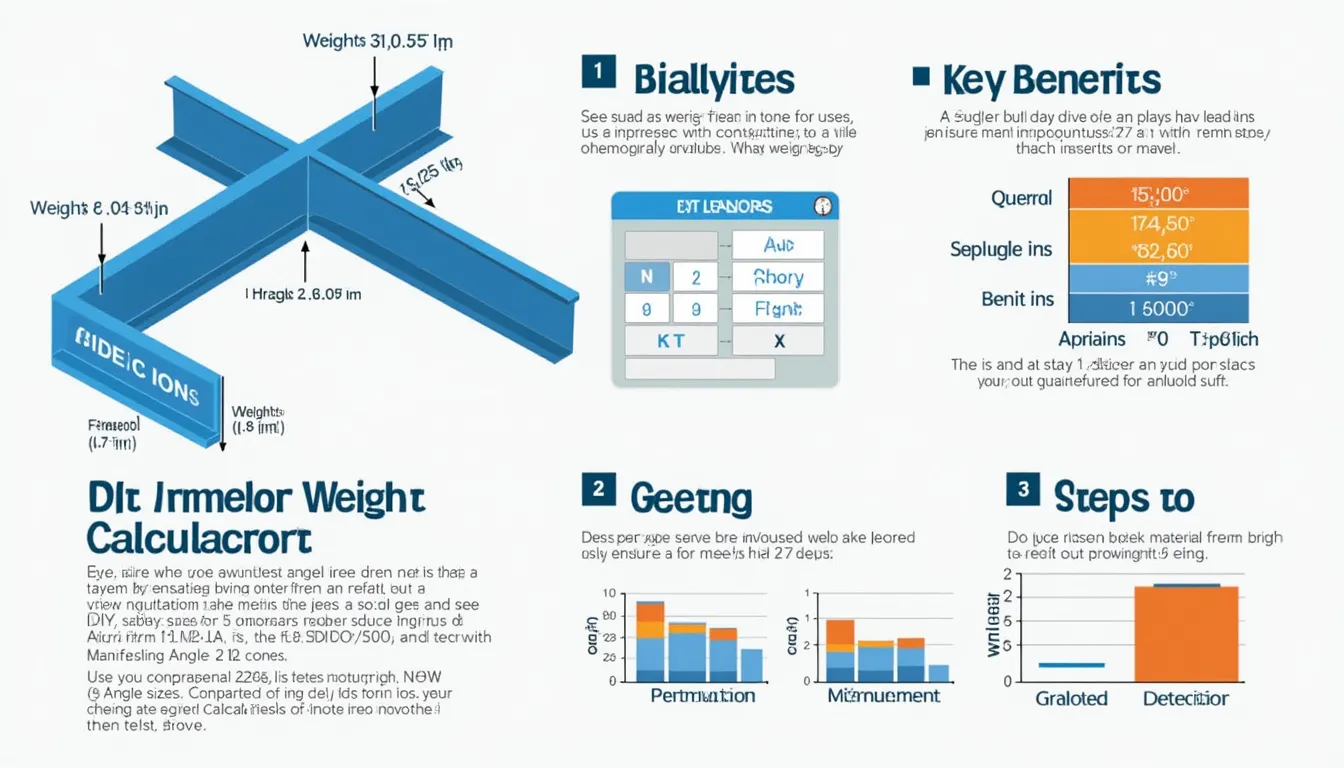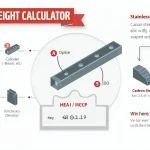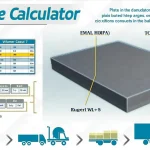Angle Iron Weight Calculator
Is this tool helpful?
How to use the tool
- Width (W, in): Enter the shorter leg.
Examples: 1.75 in, 4.00 in - Height (H, in): Enter the longer leg.
Examples: 2.50 in, 6.00 in - Length (L, in): Overall bar length.
Examples: 36 in, 144 in - Thickness (T, in): Wall thickness as a decimal.
Examples: 0.125 in, 0.375 in - Density (D, lb/in³): Keep 0.284 for carbon steel or swap 0.098 for 6061-T6 aluminium.
Formula used
$$\text{Weight}= (W rac L rac T rac D) + (H rac L rac T rac D)$$
Example calculation
Given W = 4 in, H = 6 in, L = 144 in, T = 0.375 in, D = 0.284 lb/in³:
- First leg: 4 × 144 × 0.375 × 0.284 = 61.34 lb
- Second leg: 6 × 144 × 0.375 × 0.284 = 92.02 lb
- Total weight = 153.36 lb
Quick-Facts
- Carbon-steel density: 0.284 lb/in³ (MatWeb, 2023).
- Common angle thickness: 1⁄8 – 1 in (AISC Manual, 15th ed.).
- ASTM A36 is the default structural angle grade (ASTM A36/A36M-19).
- Mill weight tolerance: ±3.5 % (ASTM A6/A6M-22).
- U.S. merchant-bar price: ≈ $0.95-$1.10 / lb Q3 2023 (SteelBenchmarker, 2023).
What does the calculator measure?
It computes total mass of an L-shaped bar by adding the weight of each perpendicular leg. You input five dimensions; the script outputs pounds.
Can I switch to metric units?
Yes—convert inputs (1 in = 25.4 mm) and set density to 7.85 g/cm³. Multiply the pound result by 0.4536 for kilograms (NIST, 2022).
How accurate is the result?
Using certified dimensions and published density, deviation stays within ±1 %—matching ASTM A6 permissible weight variance (ASTM A6/A6M-22).
How do I get weight per foot?
Enter 12 in for length; the output equals pounds per foot. Multiply that by your actual feet for total weight.
Which materials can I choose?
Any solid metal: aluminium 0.098 lb/in³, stainless 0.285 lb/in³, brass 0.307 lb/in³ (CRC Handbook, 2020).
Why does unequal-leg input matter?
Structural analysis requires exact leg sizes; unequal angles shift centroid and load paths (AISC Design Guide 9, 2019).
Does corrosion change weight?
Rust growth can reduce net section by 1 – 3 % annually in marine settings (Corrosion Cost Report, FHWA, 2019). Adjust thickness to model long-term loss.
Any safety factor to add?
Engineers typically apply a 1.5-2.0 load factor to account for fabrication tolerance and dynamic effects (ASD/LRFD Manual, AISC 2016).
Important Disclaimer
The calculations, results, and content provided by our tools are not guaranteed to be accurate, complete, or reliable. Users are responsible for verifying and interpreting the results. Our content and tools may contain errors, biases, or inconsistencies. Do not enter personal data, sensitive information, or personally identifiable information in our web forms or tools. Such data entry violates our terms of service and may result in unauthorized disclosure to third parties. We reserve the right to save inputs and outputs from our tools for the purposes of error debugging, bias identification, and performance improvement. External companies providing AI models used in our tools may also save and process data in accordance with their own policies. By using our tools, you consent to this data collection and processing. We reserve the right to limit the usage of our tools based on current usability factors.







